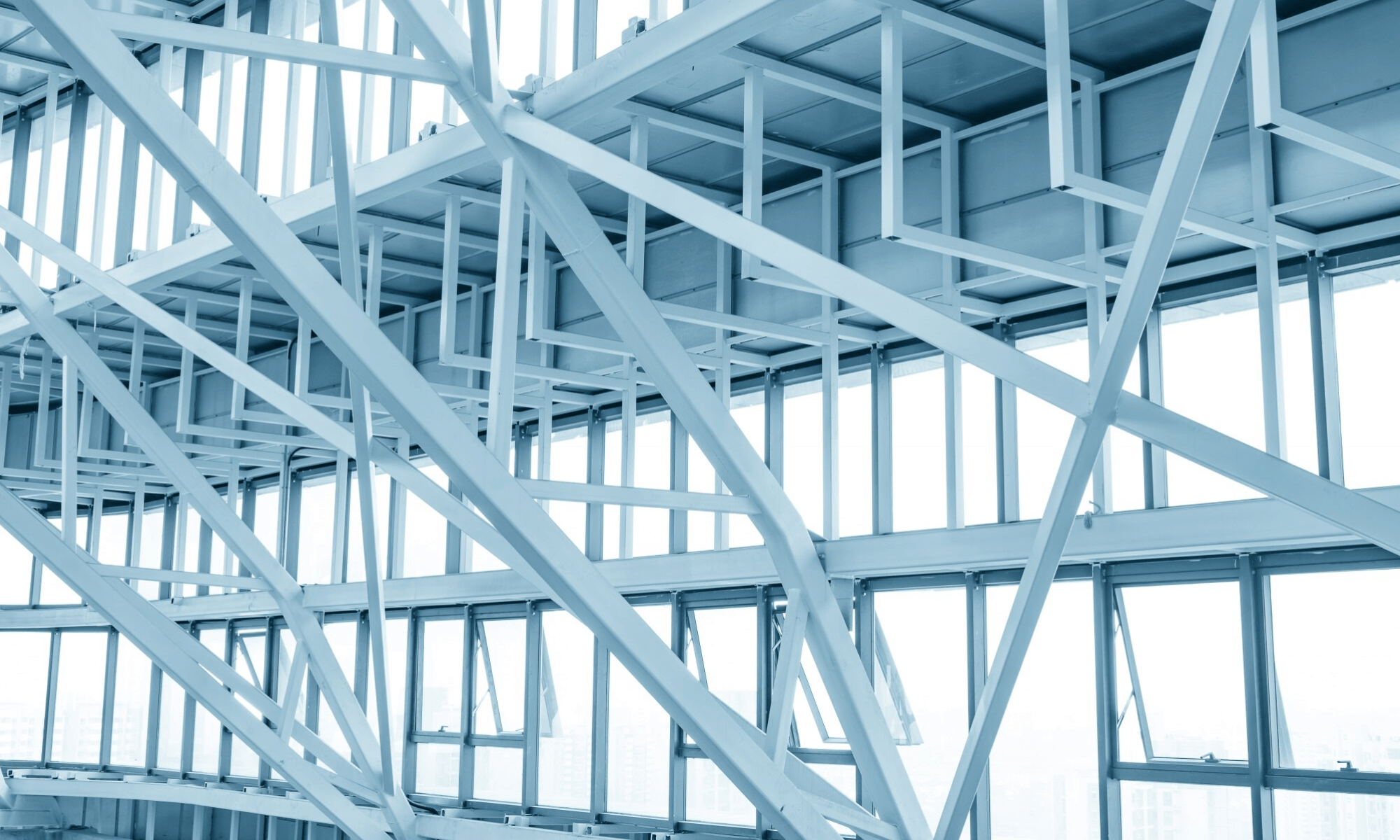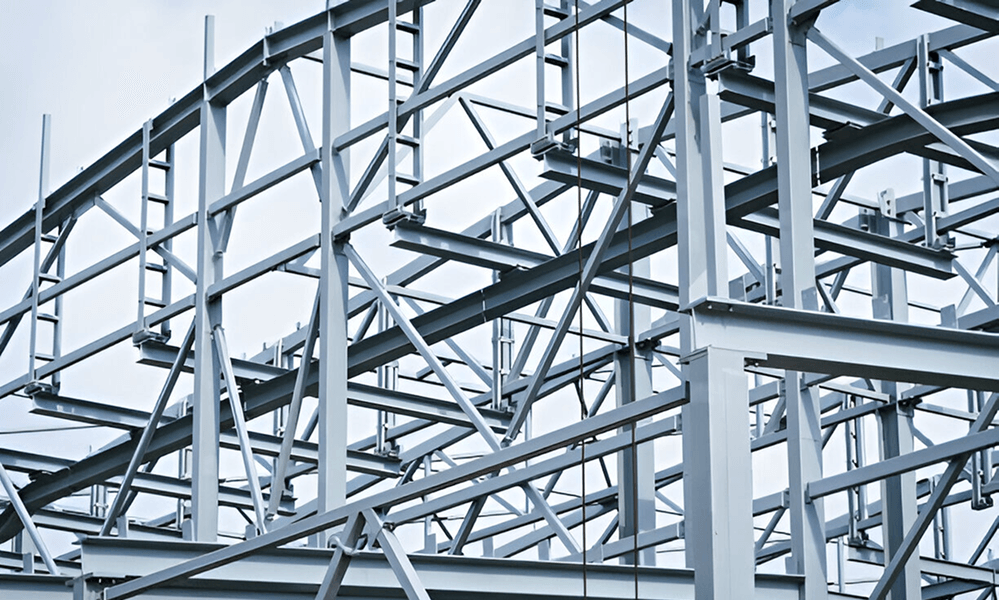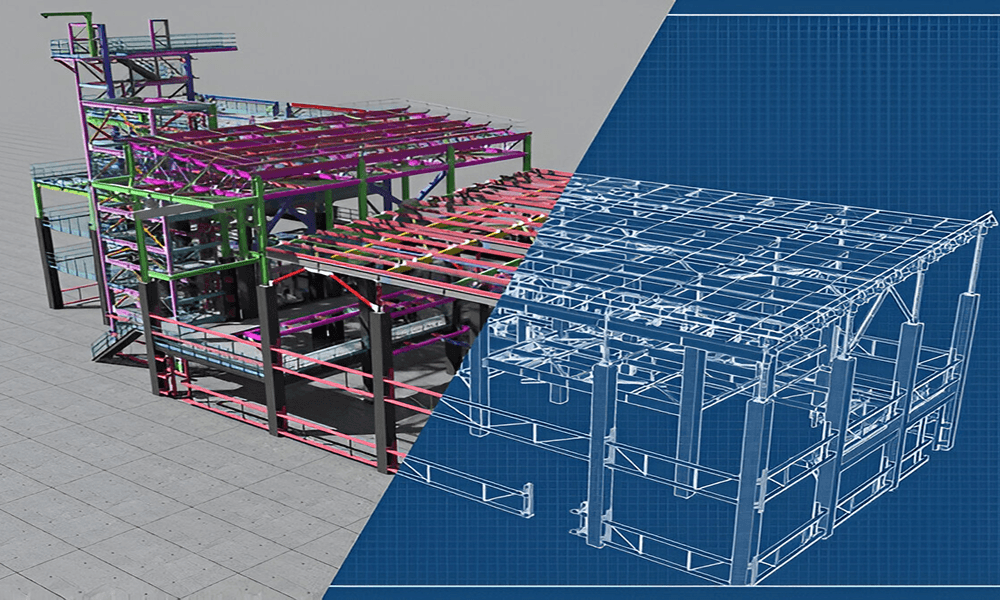Steel structures are the foundation of modern infrastructure like high-rise buildings, industrial plants, bridges, access platforms and support structures. To ensure safety, durability and cost-efficiency, these structures must meet globally recognized design standards such as AISC, Eurocode, and ISO 630.
This blog covers the importance of following global structural steel standards and highlights the most widely used ones. You'll also learn how to choose the right standard based on your project's location and requirements.
Why are steel structure design standards important?
Steel design standards ensure structural safety, material efficiency and legal compliance while minimizing construction costs. Without standardized guidelines, you risk:
- Structural failures due to inadequate load-bearing capacity
- Increased material waste from improper fabrication practices
- Project delays & compliance issues caused by non-standard construction
- Higher costs due to unnecessary rework and inefficient material use
- Potential injuries or fatalities due to compromised strength and stability.
To avoid these issues, it’s important to stay updated on structural standards and do regular checks.
At Sedin Engineering, we follow a broad set of standards based on the American, Australian, European, and international codes, ensuring that our designs meet or exceed the required safety, performance, and quality benchmarks.
Why do steel design standards vary by region?
The design standards for steel structures differ across regions due to factors like climate, seismic activity, regulations and local construction practices.
In earthquake-prone areas like California, for example, standards focus on making structures earthquake-resistant. Meanwhile, in colder regions like northern Europe, the emphasis is on how freezing temperatures affect steel.
Local governing bodies, such as the American Institute of Steel Construction (AISC) in the U.S. or Eurocode in Europe, set the standards. This ensures that buildings are designed to meet the unique challenges of their environment, keeping them safe and durable.
Major Steel Design Standards (Global and Regional)
Let’s explore the key standards region by region.
Key American Structural Steel Standards
1. AWS (American Welding Society)
AWS focuses on welding standards, ensuring steel structures are welded safely and effectively.
▪ AWS D1.1: This standard provides requirements for welding procedures, inspection, and qualifications to ensure that welds in structural steel components are strong, durable, and meet the necessary safety criteria.
▪ AWS D9: This standard focuses on welding sheet metal. It provides guidelines to ensure strong and reliable welds in thin metal sheets used in industries like HVAC, automotive and manufacturing.
2. ASME (American Society of Mechanical Engineers)
ASME sets the standards for steel structures used in high-pressure conditions, like pressure vessels, piping, and mechanical systems. If steel needs to handle extreme pressure, ASME has the guidelines for it.
▪ ASME B31.3: Standard for Process Piping, which may apply to steel structures supporting piping systems, ensuring the structural integrity of supports, brackets, and platforms in process industries.
▪ ASME Section VIII: Provides standards for the design, fabrication, and inspection of pressure vessels, often integrated with steel structures.
3. AISC (American Institute of Steel Construction)
AISC sets the standards for steel building and bridge design in the U.S. It focuses on structural integrity, safety, and efficiency, ensuring steel structures are strong, reliable, and built to last. If it involves steel framing, connections, or fabrication, AISC provides the guidelines.
▪ AISC 360: Specification for Structural Steel Buildings. This is the core standard for steel design, covering strength, stability, and connections using two design methods:
– LRFD (Load and Resistance Factor Design): A probabilistic safety approach that considers both loads and material resistance. – ASD (Allowable Stress Design): A traditional design method that focuses on elastic stress limits under service loads, providing a simpler design method.
▪ AISC 341: Seismic provisions for structural steel buildings, which define seismic design rules to improve ductility and earthquake resistance in steel structures.
▪ AISC 358: Prequalified connections for moment frames. It provides tested seismic connections, eliminating the need for custom testing and ensuring reliability.
▪ AISC Steel Construction Manual: A practical guide with design tables, material properties, and connection details for engineers and fabricators.
Note: AISC 341 specifies key seismic performance factors in steel structure design to ensure earthquake safety, like:
‣ Ductility Requirements - Seismic structures need higher deformation capacity. ‣ Overstrength Factors - Prevent premature collapse by designing steel connections with reserve strength. ‣ Base Isolation Techniques - Used in high-risk zones like California (e.g., AASHTO seismic isolation standards).
4. ANSI (American National Standards Institute)
ANSI oversees standardization in the U.S. by approving steel design standards created by organizations like AISC and ASME.
While ANSI doesn’t develop the standards itself, it ensures they meet industry needs. From material specifications to fabrication tolerances, ANSI helps maintain precision, consistency, and quality in steel components.
5. ASTM (American Society for Testing and Materials)
ASTM defines material properties for steel, including strength, composition, and performance. If you need to know what kind of steel to use, this organization provides the specifications.
▪ ASTM A36: Standard specification for Carbon Structural Steel, commonly used for general structural applications, ensuring the material is strong and weldable.
▪ ASTM A992: Standard specification for Structural Steel Shapes, used in wide-flange beams and columns to ensure dimensional accuracy and strength.
▪ ASTM A514: Standards specification for high strength, quenched & tempered alloy steel used in heavy-duty structural components, ensuring toughness and durability.
▪ ASTM A572: Standards specification for high-strength, low-alloy steel used for structural applications requiring greater resistance to forces.
▪ ASTM A500: Standard for cold-formed welded and seamless carbon steel tubing, often used for structural framing systems.
▪ASTM E1049: Standard practices for cycle counting in fatigue analysis, used to estimate how long a part will last when the load keeps changing.
▪ AE119: Standard test methods for fire tests of building construction and materials. It tests how long building materials like walls, floors and columns can resist fire and still hold up.
6. ASCE (American Society of Civil Engineers)
ASCE establishes load and performance criteria, ensuring steel structures withstand environmental forces.
▪ ASCE 7: This standard defines minimum design loads for buildings, like wind, seismic, snow, and live loads, applied together with AISC 360 for structural safety. The 2016 version of ASCE 7 (ASCE 7-16) introduces wind tunnel testing and topographic effects, making the rules more accurate for skyscrapers.
▪ ASCE 41: Seismic retrofit of existing buildings. It provides assessment and strengthening guidelines for older structures to meet modern seismic codes.
▪ ASCE 24: Standards for flood-resistant design. This sets elevation and material durability requirements for buildings in flood-prone areas.
6. OSHA (Occupational Safety and Health Administration)
▪ OSHA Regulations: These regulations govern worker safety during the construction, installation, and maintenance of steel structures. From fall protection to equipment safety, OSHA standards ensure a safe working environment for all personnel involved in the project.
7. NEMA (National Electrical Manufacturers Association)
▪ NEMA Standards: These apply when electrical systems interact with steel structures. NEMA standards ensure that electrical components, such as enclosures and wiring, are safely integrated into steel frameworks and meet operational safety requirements.
European Standards for Structural Steel Design
1. Eurocodes (European Codes)
▪ Eurocode 3 (EN 1993): This is the European standard for designing steel structures. Eurocode 3 provides detailed guidance on material properties, load factors, and stability considerations to ensure the strength and reliability of steel structures.
Part 1-5 of Eurocode 3 series (EN 1993-1-5) allows stability checks using FEA (Finite Element Analysis), making buckling resistance calculations more accurate.
▪ Eurocode 0 (EN 1990): The basis of structural design in Europe, providing a general framework for steel design principles, including safety and load criteria.
▪ Eurocode 1 (EN 1991): Focuses on the loads/forces on structures, including dead loads, live loads, wind loads, and snow loads, ensuring that all possible forces are accounted for in the design.
2. BS EN (British Standards European Norms)
▪ BS EN 10210: This standard sets rules for hot-finished structural hollow sections, ensuring the correct material properties for steel tubing and sections.
▪ BS EN 10025: This covers hot-rolled structural steels, defining material strength and quality for steel products used in structural applications.
Australian Standards for Structural Steel Design
▪ AS 4100: The Australian design standard for steel structures, which outlines the requirements for structural steel design, ensuring the safety and stability of steel buildings and components.
▪ AS 1170: This standard provides detailed guidance on design loads for buildings and structures in Australia, including considerations for wind, seismic, and snow loads.
▪ AS 1418: This standard provides specifications for cranes, hoists, and other lifting equipment. It ensures safety in the design and implementation of lifting equipment in various industries.
▪ AS 3600: This standard deals with the design and construction of reinforced concrete structures. It outlines the requirements for material properties, structural design and detailing to ensure the safety, stability, and durability of concrete structures.
Some standards are developed jointly for both Australia and New Zealand. They ensure consistency across both countries, particularly for industries that operate in both markets. For example:
▪ AS/NZS 5131: A standard for fabrication and erection of steel structures, focusing on quality control, ensuring that steel components are accurately fabricated and erected to meet safety and design specifications.
▪ AS/NZS 4600: This standard focuses on the design of cold-formed steel structures, providing guidelines on how to safely design and use steel that is shaped at lower temperatures.
▪ AS/NZS 3679: This one covers the specifications for hot-rolled steel bars and sections, specifying the material properties, testing, and quality requirements.
ISO (International Organization for Standardization)
ISO sets global standards for steel structures, ensuring quality, safety, and environmental practices are consistent worldwide.
Unlike regional standards like AISC in the U.S., BS EN in Europe, or AS/NZS in Australia/New Zealand, which are specific to local needs and conditions, ISO provides a universal framework that ensures high standards across the steel industry, no matter where you are.
▪ ISO 17607-1: General requirements for steel structures, covering structural reliability, material selection, design principles, and execution.
▪ ISO 630: Structural steel specifications, defining grades, properties, and technical delivery conditions for hot-rolled structural steel.
▪ ISO 268: Dimensional tolerances for industrial steel sections, ensuring uniformity in the production of steel profiles
▪ ISO 12944: Corrosion protection guidelines, specifying paint coatings to enhance the durability of steel structures in different environments.
▪ ISO 4354: Wind actions on structures, providing design considerations for wind loads to ensure structural stability and safety.
▪ ISO 1101: Geometrical product specifications, defining and interpreting tolerance zones to ensure high-precision manufacturing and assembly.
▪ ISO 3834: Quality requirements for welding, ensuring that welded connections are strong, durable, and reliable in steel structures.
Build strong, compliant Steel Structures with Sedin Engineering
Following steel design standards is a must for safety, quality, and long-term success in every steel project. Ignoring these guidelines can lead to serious risks, legal complications, and unnecessary costs. Staying informed and compliant ensures your projects stand strong for years to come.
If you need expert structural steel design and detailing services that strictly follow all industry standards, Sedin Engineering has got you covered. Our team is dedicated to delivering high-quality, safe, and reliable solutions for your projects.
Get in touch with us today. And let’s make sure your steel structures are built to the highest standards of excellence.




